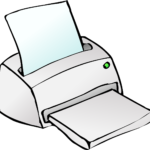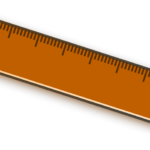7.23: Proofreading Guidelines and Techniques
- Page ID
- 59889
\( \newcommand{\vecs}[1]{\overset { \scriptstyle \rightharpoonup} {\mathbf{#1}} } \) \( \newcommand{\vecd}[1]{\overset{-\!-\!\rightharpoonup}{\vphantom{a}\smash {#1}}} \)\(\newcommand{\id}{\mathrm{id}}\) \( \newcommand{\Span}{\mathrm{span}}\) \( \newcommand{\kernel}{\mathrm{null}\,}\) \( \newcommand{\range}{\mathrm{range}\,}\) \( \newcommand{\RealPart}{\mathrm{Re}}\) \( \newcommand{\ImaginaryPart}{\mathrm{Im}}\) \( \newcommand{\Argument}{\mathrm{Arg}}\) \( \newcommand{\norm}[1]{\| #1 \|}\) \( \newcommand{\inner}[2]{\langle #1, #2 \rangle}\) \( \newcommand{\Span}{\mathrm{span}}\) \(\newcommand{\id}{\mathrm{id}}\) \( \newcommand{\Span}{\mathrm{span}}\) \( \newcommand{\kernel}{\mathrm{null}\,}\) \( \newcommand{\range}{\mathrm{range}\,}\) \( \newcommand{\RealPart}{\mathrm{Re}}\) \( \newcommand{\ImaginaryPart}{\mathrm{Im}}\) \( \newcommand{\Argument}{\mathrm{Arg}}\) \( \newcommand{\norm}[1]{\| #1 \|}\) \( \newcommand{\inner}[2]{\langle #1, #2 \rangle}\) \( \newcommand{\Span}{\mathrm{span}}\)\(\newcommand{\AA}{\unicode[.8,0]{x212B}}\)
Learning Objectives
- Demonstrate ability to proofread
The following video offers a set of starting guidelines for proofreading. (Note: this video has a jazzy soundtrack but no dialogue, so it can be viewed without sound.)
watch a video
The additional strategies below can also help you spot errors in your writing:
 | Print a hard copy of your document. Reading on paper is different from reading electronically, so you’ll catch errors on paper you hadn’t noticed before. |
 | Put a ruler under each line as you read through the document. This technique will isolate lines, making it easier to spot mistakes. Some writers also like to use a pencil to point at each word. |
 | Read through the paper backwards sentence by sentence. This reverse reading technique puts the focus on the words, sentences, and punctuation marks rather than on the ideas. |
 | Ask a classmate or friend to read the document. Two sets of eyes are better than one. |
CC licensed content, Original
- Proofreading Guidelines and Techniques. Authored by: Karen Forgette. Provided by: University of Mississippi. License: CC BY: Attribution
CC licensed content, Shared previously
- Introduction to Proofreading. Provided by: Lumen Learning. Located at: https://courses.lumenlearning.com/wm-englishcomposition1/chapter/outcome-proofreading-2-7/. Project: English Composition I. License: CC BY-NC-SA: Attribution-NonCommercial-ShareAlike


